#shapeless one
Explore tagged Tumblr posts
Text
The masterpiece
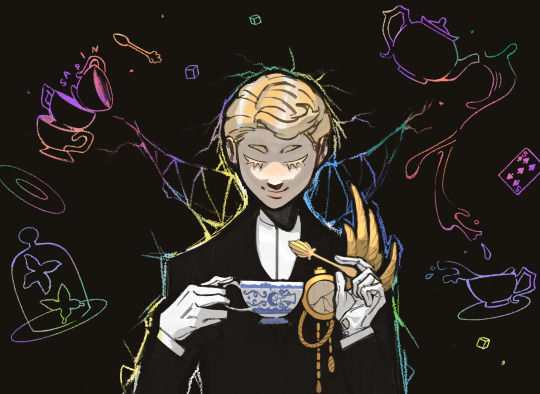
tea party 🍬
#vanitas no carte#vnc#the case study of vanitas#teacher#shapeless one#saint germain#this bitch#so ugly yet so beuty#also the art is peak
519 notes
·
View notes
Text
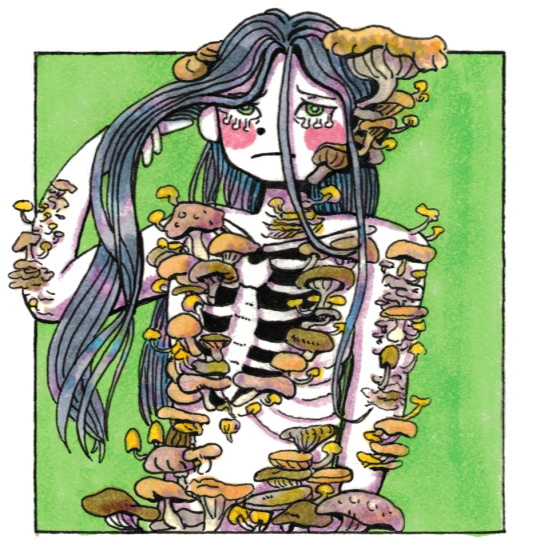
Mushroom body
(for @mikkeneko)
#SVSSS#shen qingqiu#mushrooms#body horror#better drawn mdzs#<-tag for higher effort art. At times like this I really wish I chose something else.#What is an October raffle for if not to end off with a little mushroomy body horror?#This one is inspired by my massive disappointment upon discovering that sqq's 'mushroom body' was just....guy shaped.#Come ON where is the fun in that? Why are we being kept from Fungi Amalgamation Monster Loving?#It's not going to stop Luo Binghe! SQQ could be a shapeless lump of slime and LBH and would still be over the moon for him.#Thank you *so* much for the prompt! I had so much fun. I love mushrooms and doing research was a delight! My citation list is long!#Broke my style a bit but I think it was a good choice. I have been trying to practice non-dot eyes more and its slowly coming along!#Also huge congrats mikkeneko for winning Twice In A Row!!#Your odds were a little over 1 in 1000! Lucky you!
876 notes
·
View notes
Text
I've remarked on this blog a few times before that I'm fond of the theory that The Shapeless One is Paracelsus, but I've always hesitated to elaborate, as I felt like there wasn't enough hard evidence that supported this theory being true. However, something recently clicked for me regarding one big parallel between them, and now I can't stop thinking about what that connection would mean for the story thematically.
In mémoire 61, after Machina pushes him to explain what his "plot" is, Teacher declares that he wants to achieve world peace. I've had no idea what to make of this line for a while now, just assuming that we'd need more context to understand what the actual hell he's talking about. But with the Paracelsus comparison, I feel like I'm starting to grasp what's going on there.
[This post needs a VnC-standard warning for mentions of suicide, sexual assault, and child abuse].
There are a few pieces of evidence that support the idea of Teacher being Paracelsus. VnC's Paracelsus is introduced as a great alchemist, just as he was in the real world, and the Count of Saint Germain was an alchemist as well. Nobody knows Teacher's origins, but he's one of the oldest vampires and close with the queen. There's also a little drawing of six-pointed stars that appears behind Paracelsus in the first storybook illustration of him, and those same stars are seen hanging from Teacher's walking stick in the scene where he first meets Noé.


That panel of Teacher and Noé appears at the very end of chapter 6, and the Paracelsus panel appears at the start of chapter 7, meaning these images are quite conspicuously close together.
So what does this mean for Teacher's idea of "world peace"?
In the storybook version of Paracelsus's life, he's described as wanting to alter the world formula not for scientific curiosity, but because he wants to save the world.
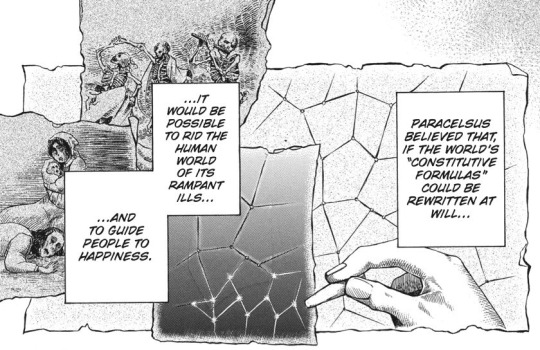
Paracelsus, per the childish version that Teacher presents to Noé, caused the Babel Incident because he was trying to "rid the world of its ills" and "guide people to happiness." The line about the human world's "rampant ills" is read over a drawing of dancing skeletons—a Danse Macabre. This is a Medieval way of drawing the personification of death, usually for the purpose of expressing the way that death comes comes for every person inevitably (the same theme later expressed by Vanitas art).
When Paracelsus speaks of the world's ills, this is the reality he seeks to cure. The world is afflicted with suffering and death, and he wants to rewrite the world's formula so that humanity can live happily without that pain.
A world rewritten to be without suffering—isn't that world peace? "World peace" is often used to evoke an end to armed conflict specifically, rather than suffering at large, but the concepts must overlap if they're pursued seriously. How can world peace last if there are people starving in famines or dying of disease? Suffering breeds violence. And how can someone seeking to alleviate "the world's ills" not want to achieve world peace?
If this is true, if Teacher's hope for "world peace" is him carrying on Paracelsus's legacy (or carrying on his own work, if they're the same man), then what does that mean for Paracelsus's supposed altruistic intentions?
We know little about Paracelsus now, only Teacher's recounting of the Babel Incident by way of a book he's reading to a child, but I think there are two ways to interpret what we do know.
Trying to rid the world of suffering is, on its face, the most noble possible intention. To lead the world to happiness is to attempt to help every other person in the world. And I can think of a lot of ways that Paracelsus's goals make absolute sense to me. If you discover that the fabric of reality can be rewritten, and you know that there are people in the world dying of famines, wouldn't you want to reshape the world so that they no longer have to go hungry?
It's possible, depending on what we find out about him in the future, that Paracelsus really will be a noble figure whose one great sin was hubris, and all he wanted from his research was to help the world in ways that make both moral and logical sense.
However, given some of VnC's other themes, I think there's another lens through which we should consider Paracelsus's actions. We don't know exactly what he was trying to rewrite with that disastrous experiment, but that Danse Macabre does give us one possible clue.
One of the themes that VnC has been slowly developing throughout its run is the idea that, though trying to save a person's life is noble, it is not noble to deny all death as a whole. This is a story about the concept of Vanitas, the idea that death is inevitable and that all else is rendered meaningless in its face. Noé feels like he failed Louis because he was unable to kill him when he asked, and it seems like the manga's being set up to end with Noé killing Vanitas to escape a fate Vanitas considers worse than death. One big part of what makes Mikhail so unsettling is his denial, his laughing about his mother's draining and the fact that he cannot accept the reality Luna has died, and Vanitas is horrified to hear that Misha is planning to resurrect their parent. That same issue goes on to be the one thing that finally drives a wedge between Noé and his teacher, as Noé can apparently forgive the man for purchasing him on the black market and killing Louis, but he's horrified to hear that Teacher told Mikhail that resurrecting Luna was possible.
All of these scenes have other elements to them, other things that drive the characters and inform why these specific ideas of undeath are so deeply horrifying to them, but the buildup of this running theme is an undercurrent through all of it. Vanitas means that someday all people must die, so what does it mean when somebody tries to deny that?
Even further, there's the broader horror of both Noé and Mikhail failing to process the bad things that happen to them. Misha commits blithe horrors in part because he does not understand that his sexual abuse was wrong, so he seems to see no problem with sexually assaulting others now in turn—as he does when he pressures Noé to drink his blood. Noé happily recounts being kidnapped and sold on the black market, remarks on Chloé and Jean-Jacques's goodness minutes after Chloé assaults him in his sleep, and brushes off the incident of Jean-Jacques drugging him to the extent that even Jean-Jacques himself is unnerved by it. All of that is deeply concerning behavior.
Misha is written to be obviously uncanny in his denial, and that uncanniness holds up a mirror to the subtler horror of Noé's own disconnects from reality. The more recent chapters have also begun drawing direct attention to the ways that Noé's denial of the bad in the world becomes problematic. The aforementioned scene of Vani, Dante, and JJ being disturbed by Noé's "it doesn't bother me" line does this, as does the long discussion Noé and Vanitas have about why Noé's ignorance of anti-Dham racism upsets Dante so much.
There is an ongoing tension in VnC between the inherent goodness of peace and life and the horror of what comes when those concepts are taken too far. Noé and Vanitas are this in a nutshell: an endlessly clashing duo made up of a too-extreme pessimist and a too-extreme optimist. The story arcs thus far have taken turns challenging each of their worldviews, slowly pushing Vanitas to open up and let himself hope for peaceful solutions, let himself accept love and emotional closeness, while also slowly pushing Noé to confront the fact that sometimes not everything has a happy-making peaceful solution after all. Sometimes "saving" a child means she has to die, and sometimes an enemy will have an entirely sympathetic reason to hate vampires, but Noé still has to fight them anyway to save the people he wants to save, regardless of whether that enemy is "right" or not.
Noé lives in denial of his own past traumas and his own present-day potential for harm. He denies the potential that "good" people he meets might harm him, and he struggles to accept instances where he has harmed others in turn. Dominique and Vanitas go on for pages after the amusement park about how reckless and overly trusting he can be, and he turns around, unable to cope, when confronted with the truth of what he did to Misha with his claws. However, Noé also has the benefit of his proximity to Vanitas knocking just a bit of sense into him, and it might not be a sure thing that he's going to stay in denial-land forever.
One of VnC's specific points of tension is the question of if/how Noé will grow to accept the hard things that currently bounce off his oblivious denial like water off of a raincoat. The end of mémoire 1, the statement that someday he's going to kill Vanitas, suggests that perhaps he might learn to understand how death, despite its pain, is important in its own right. It suggests that maybe he'll come around to no longer denying death and insisting that salvation is always its avoidance.
However, if he can't quite make that leap, the story provides us with dark mirrors to show us what a monster Noé could become by doubling down on his idealistic, optimistic denial. Misha's current state is Noé to an extreme, an innocent child committing horrors as he utterly fails to process the truth of his own horrific early childhood. Misha's driving motivation is a hatred of pain and suffering, and he's willing to do anything to resurrect the family that saved him from that pain in the past.
Then there's also Lord Ruthven, a man who was once an optimist in Noé's own mold, but has since broken bad in a spectacular way. Noé and Ruthven recite the exact same line about liking both humans and vampires, an obvious parallel, but now Ruthven is working with Naenia. Now he's living in the aftermath of his idealistic peace plan imploding and almost costing him his life. Ruthven despairs the last time he visits Gévaudan, lamenting the wrongness of his naive past hopes for understanding, and now he's working toward some unknown end involving Naenia, Charlatan, and the Queen. Now he's committing horrors of his own, biting at least three people by force, overriding their wills, and associating with the being that steals innocent people's true names.
There's also the question of what the hell Ruthven is doing with the queen. It seems he was somehow involved with Faustina devolving to her current state, and Loki references "smashing up her corpse," so it's possible Naenia's existence may be a sign that Ruthven wants or wanted her dead and/or cursed. However, the shots of him with the Faustina-like body in the tank at the end of mémoire 18 suggest there's a chance that he could instead be involved with some form of resurrection scheme (or a scheme to preserve/save her if she's not yet fully dead).
Ruthven exists in part to demonstrate the ways that an idealist like Noé can go bad, and it's possible that he, like Misha, is attempting some sort of awful resurrection, once again denying the reality of death.
Then, finally, there's one more character with whom Noé has these sorts of obvious parallels. The man who, perhaps, is also meant to represent what Noé could become if the dangerous sides of his optimism aren't reigned in: his teacher.
Noé is fascinated by Vanitas, drawn to him out of care and connection, but also because he wants to observe and understand him to sate his curiosity. In a darker mirror of the same trend, we see Noé's teacher allow Louis, Noé, Domi, and Misha to come to harm at least in part for the simple enjoyment of seeing how they react when placed in dark new situations. Noé and his teacher are also the only crimson vampires we know of who find the Blue Moon beautiful and alluring, rather than a source of fear (assuming that Teacher is a normal crimson vampire).
Noé was raised by this man; his worldview has been shaped by him in countless ways big and small. Noé was already living in cheerful rejection of trauma before The Shapeless One found him, but he could not have remained so radically detached from the painful parts of the world around him if his teacher had not wanted and allowed him to do so. He censored Lord Ruthven out of Noé's education, and he apparently did the same with anything that discussed (or expressed) severe bigotry toward Dhampirs. How else did Teacher shape him, and to what goal?
We know that the Shapeless One taught Noé how to fight. Given that "world peace" line, I wonder if perhaps he may also have taught him his morals on wanting to avoid conflict.
Teacher is a contradiction. He talks about "world peace," but he blithely leads Louis to his doom and supposedly doesn't hesitate to half-kill anyone who calls him by the wrong name. Marquis Machina calls him an incomprehensible natural disaster for this reason. Yet, despite all his rampant cruelty, I'm beginning to think that he might be just as much of a dangerous optimist as his student.
Teacher is defined by the fact that, in every scene, he always seems to look like he's having fun. There's hardly been a single panel where he's not drawn smiling. Sometimes that fun is vicious, a cruel smile made as a threat to Vanitas when he fails to address him by his name, but just as often, his aura seems horrifically innocent. He's just a man with a sweet smile and rather dull eyes having a very good time with life.
In the past I've largely looked at this smile as an extension of Teacher's sadism. He toys with Louis and Noé for the fun of it, and I took his smile as an expression of his cruel enjoyment of the pain he creates in his wake. However, now that we've seen him interact with Machina, now that we've observed him speaking casually with a peer for an extended period, there seems to be a disturbingly sincere quality to him as well.

Based on how he's portrayed in mémoire 61, when Teacher says he does everything he does for the sake of "world peace," I honestly think I believe him. I don't believe that he's not a villain—I can't guarantee that his vision of "world peace" would even align with a normal person's definition of "peace" or "happiness," but I believe that he's speaking some version of honestly here.
There's an honest to goodness optimism in that ever-present smile. There's a hope and a genuine quality to what he announces to Machina, in contrast to his smiles of sweetly cruel schadenfreude.
So perhaps, if all that is true, if Teacher is another dark mirror to Noé and he really does want to bring about world peace, then the point of him is that "world peace" has the potential to be a horror. What is the pursuit of world peace if not the ultimate pipe dream of every idealist in the mold of Noé and Ruthven? And what is VnC if not a long catalog of the horrors that idealists can bring about if they aren't careful?
And that, finally, brings me back to Paracelsus and the Danse Macabre.
Depending on what Paracelsus wanted to achieve through his experiments, it's possible he may have been yet another character trying to escape the harsh reality of death. The line about the world's "rampant ills" is placed over the Danse Macabre, after all—a symbol of death's universal inevitability. Is that the painful ill that Paracelsus wanted to address by rewriting the world formula? Inescapable death itself?
If so, Paracelsus becomes the ultimate embodiment of what happens when one denies death's certainty and the necessity of that certainty. He's the ultimate denial of "Vanitas" and what it represents on a scale far larger than Noé, Misha, or even Ruthven could grasp. And the manga casts his failed experiment as a Tower of Babel, throwing the world into chaos and causing countless deaths in his failure's wake.
Meanwhile, Teacher seems to have some ideas about how to cheat death in the present day, as he's promised Misha that there's a way to bring "The Vampire of the Blue Moon" back to life. This could be a lie, of course, or he could be planning to bring back "the vampire of the blue moon" in a way that does not actually bring back Luna as an individual. However, even trying to bring back the Blue Moon in some other way, perhaps through the human Vanitas, still represents him trying to restore something he found beautiful that was lost because of death. It still ties him thematically to the perversion of death as an ending, the same as Mikhail and Ruthven.
So far every character we've seen that wants to undo death is cast as an antagonist. Ruthven, Mikhail, and The Shapeless One are all united by a cruelty and a perverseness in various forms, and their goal is part of this. Death is a tragedy, but although trying to save the lives of people who want to live is noble, attempting to undo or eternally escape death is a far worse horror.
If Teacher is Paracelsus, or if they're closely connected in some other way, then that serves to further this point and show how the horror of escaping death extends to Paracelsus as it does the others. Teacher is strange and cruel. Paracelsus might be a nobly hubristic historical fool in a storybook, but if these two characters are connected, that instantly reveals the unsettling truth of how wrong Paracelsus's potential attempt to thwart death would have been. Nothing Teacher is working for can be wholly good.
And, just as Noé and Misha's denial is both present and harmful beyond the most severe subject of death, even if Paracelsus wasn't trying to craft a world without death by altering the world formula, we know he was trying to create a world without suffering. Again, this is a noble goal in theory, but so long as death remains, some suffering will remain as well. Crafting a world without pain and suffering can also go much too far, can slip into denial and cruelty. Mikhail's whole motivation as an antagonist is his search for a life without pain, and look where that's led him.
A rejection of all suffering can be an extremely dangerous thing, whether it's running from one's own mental pain or wanting to rewrite the world to negate all suffering as a whole. This dream will never not be a detachment from reality.
The Case Study of Vanitas is a series that seems to be searching for a balance of optimism and pessimism, a way to approach the harsh realities of life that lies between the toxic extremes embodied by Vanitas and Noé. To lapse too far into hopeless pessimism creates a Vanitas, a Chloé, an Astolfo. It creates people who are suicidal, genocidal, or both, and dangerous to themselves and others for it. However, to go through life in a state of eternal joy without processing one's pain, or to attempt to create a world wholly free of suffering—that is just as dangerous and foolish. What are Noé, Misha, and Ruthven if not dangers to themselves and others? What is Teacher if not the most dangerous man in this manga?
Noé and Misha are unsettling because they smile through the bad things that happen to them and act as though they aren't bad. They each have some exceptions to this rule—Louis's death for Noé and the pain suffered at the hands of Moreau for Misha—but they still come across as at times disconnected from the reality of pain.
Yet, neither of them is as disconnected from the reality of pain as a man that can behead the grandson he raised with a smile on his face. Noé as a child sees the fun in being kidnapped and put up for auction. Teacher, if his smile is to be believed, sees the fun in every single thing we've seen him do, and that's what's so unsettling about him. He genuinely seems to be having a good time, including and especially when he's blithely committing horrors for the fun of it.
Noé and Misha's strange behavior stems from trauma, and we don't know that's the case for Teacher. Perhaps not, as he seems much colder and crueler in his tendencies than either of them. But either way, the happy sincerity displayed by both of them is echoed in the face of the Count of Saint Germain as he tells Machina that he's searching for world peace. That is the face of someone idealistic, someone who believes he's working toward a real goal that both justifies and delights him.
Teacher wants world peace, and his warped nature means that we have no real idea what "world peace" means to him. Is a world at peace a world where he still gets to violently beat people who get his name wrong? A world where he still gets to have fun observing the free will and choices of the traumatized children he raises? Maybe he once believed in a world that was truly without suffering, and his overly-long life and mad optimism have eroded his tether to reality, turning him into the awful person we see now. Maybe the catastrophe of the Babel incident broke him and turned him from a hubristic idealist to warped echo of his former self. Maybe he somehow thinks all the suffering he causes is justified if it's in pursuit of his noble end goal. Maybe his version of "world peace" is a world where all people can live free from the fear of death, and the smaller pains caused along the way are irrelevant in the face of that impossible dream.
Or maybe he's just a cruel hypocrite.
In the end, we still know too little about both Paracelsus and Teacher to make any grand proclamations about the truth of their characters. However, I can't unsee this connection between them now that I've seen it. Teacher is one of Noé's dark mirrors, a character that represents the horrors possible when one goes too far down his current emotional path. Noé is optimistic to a fault, convincing himself to see only the best in many truly awful scenarios, and Teacher is the man with an eternal smile printed on his face. Noé loves and wants to save Vanitas, and Teacher speaks of the Blue Moon's ultimate beauty and says he has a way to bring them back to life now that they're dead. Noé is the eternal savior, always desperate to prevent people from dying, and Teacher claims that everything he does is done in the name of achieving world peace.
Similarly, Paracelsus is defined by throwing the world into chaos and horror due to his over-optimism. He tried to go too far, tried to rid humanity of its countless ills and create his own form of world peace, perhaps even tried to rewrite the reality of death. Did he hate pain and cold like Misha? Did he want to stop unjust wars like Ruthven? Did he want to become a savior in the image of Noah?
If Teacher's goal of "world peace" is to be believed, then whether or not Teacher and Paracelsus are actually the same person, they represent the same thematic extreme. Death is inevitable, says the concept of Vanitas. It's inevitable and Noé must learn to accept that fact before he does something awful in the name of pain and death's prevention. Teacher and Paracelsus have both done something(s) awful in the name of pain and death's prevention. Teacher and Paracelsus have followed Noé's path of optimism to such an extent that they, in one way or another, both claim(ed) to want to save the world, and this requires a mad extreme of Noé-like cognitive dissonance and hubris.
Paracelsus pursued some goal, some way of granting humanity happiness that was supposedly noble but still murky in its specifics, and he warped the fabric of reality and caused the countless disasters of the Babel Incident in the process. And that's assuming the storybook is true, and Babel really was accidental on his part. Meanwhile Teacher has warped the seemingly noble dream of world peace into something that he can claim is served by the way he's tormented Louis, Misha, and Noé. There's a chance that both men tried or are trying to undo the reality of death. They're bound by the same underlying current of scientific curiosity intermingled with their dreams of world peace.
Noé is not an alchemist, and he's not particularly skilled at rewriting the world formula. He's unlikely to have any chance to rewrite the fabric of reality itself for the better. He's unlikely to have any chance to achieve "world peace" by any definition.
Noé is, however, a dangerous optimist who has not yet learned that death is unavoidable. He hasn't yet learned that death can be preferred to its alternatives. And he was raised by a man who seems like he has not learned or does not care that disrupting Death in the grand sense will inevitably lead to horror. Or perhaps a man who enjoys horrors and wants to toy with absolute death as a part of that. And all this in a world warped and defined by the folly of a man who may also not have understood the horror of evading death.
So Teacher might be Paracelsus. I think this connection between them only strengthens the odds of that theory being true. But even if he isn't, they represent a similar thing for Noé and for the manga's themes at large. You cannot rid the world of the Danse Macabre, and attempting to end that dance will only bring greater ills and greater pain than death on its own could ever hope to bring.
A strange and dangerous man proclaiming with an honest smile that he wants to bring about world peace does not make him any less strange or dangerous. Depending on his definition of world peace and his idea of death's place in it, that idealistic goal may actually make him far more dangerous than if he were nothing more than a simple sadist.
#I've talked at length about some of these ideas in other posts before#but putting this together felt like finally being able to marry a few different major themes I've written about#that have stayed largely disparate up to this point#also huge shoutout to the several other theorists I've seen point out the thing with teacher and paracelsus and the stars#that's such a cool detail#ANYWAY this is more of a reach than what I'd usually stake a whole meta essay on. but I feel like my thematic foundations are sound#vnc#vanitas no carte#the case study of vanitas#teacher#vnc teacher#the shapeless one#comte de saint germain#vnc paracelsus#teacher my beloathed#noé archiviste#theory#english major hours#vnc spoilers
80 notes
·
View notes
Text
they make me unwell so i made them unwell in return.. girl whatever

jackie down the line - fontaines dc
#toxic alien yaoi save me save me toxic alien yaoi toxic alien yaoi#on GOD why is garak so shapeless#drawing julian is so fun and easy in comparison#its literally shapes man vs evil potato lizard#this song screams garashir but so do many fontaines songs tbh#maybe i'll do smth for starburster one day... hmmm...#garashir#dr julian bashir#julian bashir#elim garak#ds9#star trek#star trek ds9#star trek deep space 9#star trek art#garashir fanart#garak x bashir
62 notes
·
View notes
Text
STOP IT YOU SUS

of course he would say that lol
#case study of vanitas#vanitas no carte#comte de saint germain#shapeless one#i think this guy has a counterpart ftom dgray man
83 notes
·
View notes
Text
The Devil, the Scientist, and the Most Beautiful Creature

This is my attempt to analyze the connection between the Teacher, Faustina and Luna through the lenses of Goethe’s “Faust” and determine the origins of the “cursed moon twins”. There’s also alchemy.
This text will consist of four parts. And yes. It is long. Reader, you are warned.
Enjoy!
PART ONE: PARACELSUS, THE FATHER OF BABEL
What do we know about Paracelsus:
Lived in 15-16 centuries;
Was a scientist;
His actions led to the Babel Incident.
The real world Paracelsus was “the father of toxicology”, our Paracelsus is The Shapeless One. Alright, this is a bold statement, but why not.
The twin six-pointed stars above Paracelsus head (Ch. 7) have always stood out to me. Guess who else has exactly same two six-pointed stars as well? Teacher/Saint Germain (Ch. 55)!
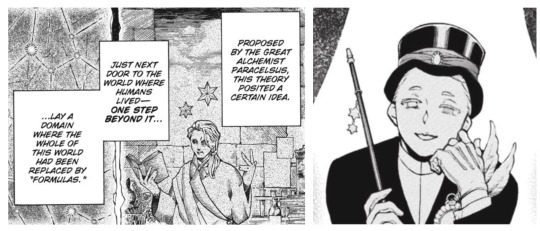
Some other similar motives:
Paracelsus’ face is always obscured, we never see his eyes, only vague shadows. Teacher’s face was always drawn without eyes before the Big Reveal Moment in Ch. 55. He’s also known to frequently change his name and appearance, to the point where it’s not always possible to determine whether one’ve met him before (Vanitas has met him in another form, but has no idea when and how it happened).
Paracelsus wanted to save the world from sufferings and guide people to happiness (Ch. 7). He also assembled a team of scientists to conduct a research. Teacher/Saint Germain is referred to as savior by Misha, and he also saved Noé from human traffickers. He also claims his ultimate goal is world peace (Ch. 61). But the goal is shared with someone (he says “our” wish specifically).

And honestly, their vibes just fit so well. Paracelsus and Saint Germain, two mysterious figures who are renowned scientists and alchemists with ambiguous lore — why wouldn’t they be the same person?
Since I want to use “Faust” as base for analysis, let’s assign him a role – Mephistopheles. I mean, just look at this (Ch. 61). It’s as devilish as it can get! The free force in s shape of a fine gentleman that ultimately creates destruction.

Mephistopheles also claims to be an observer:
“I’m so involved with Man’s wretched ways,
I’ve even stopped plaguing them, myself, these days”.
And look how well it fits to Teacher, who left the Court to enjoy his little things in a secluded mansion (manipulating kids and raising pawns) and also claims to be an observer!
Alright, I’d like to keep this part short because my main focus here is Faustina-Luna situation, so let’s move on. We’ll get more bits of this manfailure there anyway.
PART TWO: FAUSTINA, THE QUEEN OF THE RED MOON
What do we know about Faustina:
she’s a Queen and the first vampire of red moon to ever exist, while Teacher was by her side the longest;
she has a special power to control other vampires as herself, not as Naenia;
she’s mostly active as Naenia and was likely cursed in 17 century;
there are two physical bodies that are stated or hinted to be her: one in her bedroom in Carbunclus castle and one in Ruthven’s lab.
Now let’s take a look at Faustina’s bodies (Ch. 13, Ch. 26). I briefly mentioned in one of my recent posts that I think Faustina changed bodies at least once, possibly due to them being damaged by curse. I believe these pics support this idea: the body in the castle looks like that of an adult person, with limbs and fingers much longer than those of the body that was seen in Ruthven’s lab and reacted to Naenia’s name (Chloe also summoned Faustina in the same body of a young girl).

Additionally, when Ruthven talks about her connection with Saint Germain, she is portrayed as having adult-like proportions (Ch. 19). And when Naenia takes more human-like shape, it also has adult-like proportions (Ch. 9). So I think she was cursed as an adult, and her original body is the one in the bedroom, but her soul went from one vessel to another, while her cursed form remained more like her original body.

While we are on the topic of bodies, I’m going to show you this. Thankfully, the moment when Luka stayed at Faustina’s bedside wasn’t omitted from the anime — and the queen’s skin looks quite the same color as Luna’s. I’m not sure what to do with this information yet, but it creates another link between them. It’s quite interesting that Faustina’s corrupted form looks a lot like Luna’s normal form.

Ok now that I’m done with this idea, let’s move on to something more interesting: Faustina’s role in the story.
Right now her position is not really active: she steals true names as part of the Charlatan, but it’s unlikely that she in control of the organisaton (at least in present time), and Ruthven leads it. She obviously can’t fulfill her duties as a Queen either: they’re taken over the Senate (which again includes Ruthven) and a puppet-on-the-throne Luka (who is, again, under Ruthven’s control. Ruthven, what kind of power play is that?).
But I think it’s wasn’t always like this. After all, she was an absolute monarch with magical power to make every vampire fall to her feet! And, well, she had to do something even before that, right?
I believe that prior to becoming a vampire she was involved in Paracelsus’ research, possibly even as an alchemist. While the majority of well-known alchemists were male, there were some cases of women conducting and publishing researches in this field as well. A notable example are Sophie Brahe (1559-1643), who studied astronomy and was also well-versed in Paracelsus’ medical texts, and Isabella Cortese(fl. 1561), who was the first woman to publish a book on alchemy, titled The Secrets of Lady Isabella Cortese. Tbh I just really hope that Paracelsus team (Ch. 7) will include women in general…

Of course, my desire to see Faustina as an alchemist is not enough to claim that this is a credible theory. So let me elaborate on that a bit more (and we’ll get to Luna right after that).
Her name derives from the name of a Ghoete’s character Faust, a man who makes a deal with the Devil to exchange his soul for fulfilling his desires of knowledge and pleasures. Faust is deeply dissatisfied with his life:
“He drives his spirit outwards, far,
Half-conscious of its maddened dart:
From Heaven demands the brightest star,
And from the Earth, Joy’s highest art,
And all the near and all the far,
Fails to release his throbbing heart”.
… And Mephistopheles offers him everything he wants.
I think she literally is Faust. And her Mephistopheles wanted to grant her wish that they probably shared (Ch. 61).

Faustina (well-educated person dissatisfied with reality) met Paracelsus (who offers a way to change the entire world). Perhaps he plays both the role of God and Devil in this version, since Paracelsus is described as someone who actually wanted to help people, but his action led to a literal apocalypse. Way to go, Paracelsus!
Anyway, in my theory, she joins the research and becomes the first vampire during the Babel incident. Perhaps all other scientists, except for her and Paracelsus, died during the incident (but the research itlsef survived and was later used by Chloe’s family). Faustina was reborn as the Queen and Paracelsus as the Teacher.
Why only Faustina is considered to be the first vampire and not both of them? Well, they didn’t necessarily fully awake as vampires at the same second of the same day. Or maybe the Teacher hides his identity and true powers this good… After all, he is known to mess with history (for example, he removed everything about Ruthven from his books, leading Noé to being completely oblivious about his existence). But honestly the parallel between vampires reacting to presence of Faustina (Ch. 38.5) and Teacher (Ch. 55) are interesting…
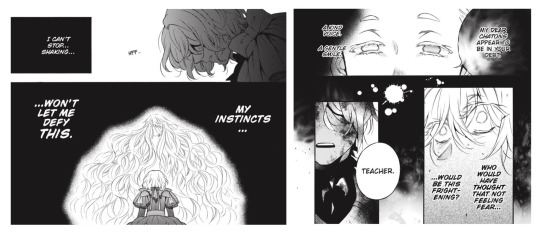
PART THREE: LUNA, VANITAS OF THE BLUE MOON
What do we know about Luna:
they’re the only known vampire of the blue moon and are considered abnormal and dangerous;
Naenia is the one who steals vampires’ true names, but it’s believed to be the fault of the first Vanitas;
they’re told to have created the Books of Vanitas (it may of may not be true);
they’re canonically agender, neither male nor female, and regret knowing what they are (Ch. 51).

I mentioned here that Luna is a Homunculus. Now it’s time to explain what led me to this idea.
Noé points out that Luna and Faustina look alike (Ch. 49) Is it connected to whatever knowledge Luna regretted having? Considering Luna’s unique blue skin, blue blood and their statement “I’m not like any other living thing in the world”, I don’t really think Luna could be Faustina’s human twin. Or rather, it’s not my first guess. I’m inclined to believe that Luna was an artificial being whose creation was connected with Faustina.

In “Faust II”, the theme of artificial human, the perfect creature that surpasses humanity and yet serves their creator, is also present. Faust’s student, Wagner, works on a project when Mephistopheles visits him. Wagner claims: “A Man is being made!”, Mephistopheles jokes about a “loving couple hidden up the chimney”, but Wagner pronounces this way of creating life “unfashionable” (🤝) and delivers a beautiful speech:
“The tender moment from which life emerged,
The charming power with which its inner urge,
Took and gave, and clearly stamped its seal,
First in a near, and then a further field,
We now divest of all that dignity:
Though the creatures still enjoy it, we,
As Men, with all our greater gifts, begin,
To have, as we should, a nobler origin”.
The interesting thing here is that Wagner’s creation is alluding to Paracelsus’ recipe of homunculus in Of the nature of things, 1537 (I found this in an article which referenced a publication by R.D. Gray Goethe the Alchemist. A study of Alchemical Symbolism in Goethe’s Literary and Scientofic Works.) Paracelsus called the creature “chemisch mensch”, but Goethe adapted that to Homunculus, an alchemical term.
The Homunculus desires to become fully created: “Since I exist, I must find things to do”. He (this character is referred to as a male in “Faust”) seeks “the beginnings of creations”, to “reach at last the human state”. In order to achieve it, he wants a connection with the sea goddess Galatea (here a version of Aphrodite), but his brittle flask hits her chariot-shell and breaks. He spills in the sea and dies, but he also merges with the sea itself.
Now that I’m thinking about it… Painfully familiar… Blink if you too were forever traumatized by “I won’t die, Noé. Even if I’m no longer here…” in Ch. 1…
Well, back to Luna. Just like Goethe’s Homunculus, Luna was created in a certainly unique way. Here it’s time to remember the fairytale about Vanitas, told by Noé to Amelia (Ch. 1). Granted, it’s something he learned while under Teacher’s care, and we know he isn’t above censoring of wildly retelling anything, but Amelia doesn’t correct him on anything, so let’s accept this fairytale as it is.
Perhaps the “birth” of the first Vanitas on the night of a blue moon refers to the artificiality of their creation? Artificiality can be equalized with “unnatural” birth of the Moon in the fairytale version. Even if the concept of homunculus will not be directly named in VnC, we already have the idea of an artificial being that differs from all living things in this world, is nonbinary and possibly agender and is able to perform unique functions — to control the book of Vanitas.

Interestingly, our Vanitas and Misha are also to some extent “artificially created” – without experiments of Moreau and Luna’s bite they wouldn’t have been able to control the Books. It’s possible the reasons for the existence of Luna and both their children were somewhat similar – it was merely an experiment conducted in order to change the design of the world. (Ch. 48)

Perhaps those “reasons to exist” are also the reason of Luna’s regrets and the reason to forbid Vanitas to allow Archivists to read his memories. We don’t know why it’s so. Maybe Vanitas learned something about Luna, and now those memories are meant to be hidden carefully. Maybe Luna just wanted to find out about themselves, asked an Archivist to read their memories (Machina, perhaps), and was so traumatized that simply wanted their children to never go through this kind of pain.
And the knowledge that traumatized Luna? It could have been knowledge about the purpose of Luna’s existence. I don’t think Luna was created by accident. They were meant to do something or to be something. The Books are said to be created by the Vampire of the Blue Moon, but they could have been created for them as a tool to rewrite the world once again.
In “Faust” Mephistopheles tells to the audience:
“In the end we’re dependent on
The creatures we’ve created”.
What if Paracelsus and Faustina needed someone else to fully realize their plan? And that someone was Luna, “the most beautiful creature in this world” (Ch. 55) (he’s so real for this).

Saint Germain, the president of Luna fan-club, everyone!
Oh, one more little thing. The “perfect creation” of alchemy is the Philosopher’s stone.
Carbunculus is one of many synonyms for Philosopher’s stone, which may be anything from a rock to a human-like being (waving at fellow FMA fans);
It’s also the name of Queen’s castle;
And Goethe uses this word to describe how Homunculus looks:
“The deep alembic now has passed,
And like a living coal at last
A fine carbuncular fire is glowing
Into the dark it’s brilliance throwing”.
No way it’s a coincidence. Just. No way. C’mon, it Jun. So… Luna is the “ultimate creation” of alchemy, VnC’s version of Philosopher’s stone and Homunculus at the same time.
PART FOUR: THE THRIAD
Now that we’ve assigned roles to all of them, let’s go deeper in another rabbit hole that is alchemy. This one is hella hard to research because of the amount of extremely different modern occult groups. But alchemy was my childhood hyperfixation, so… let’s do it.
Together, Faust, Mephistopheles and Homunculus form a triad. (Yes, Wagner created Homunculus, but he kinda diss appears from the plot afterwards and Homunculus goes on a journey with Faust and Mephistopheles). This is kinda relevant, because Goethe actually researched the topic and it’s not unreasonable to connect his characters (and their VnC analogues) to certain alchemical symbols.
The triad is Salt, Mercury, and Sulfur. Here we can see irl Paracelsus at work again, because he was among the alchemist who popularized this theory. In alchemy, the idea of “feminine meets masculine” is pretty common, but unfortunately, different sources assign these qualities to different elements in the triad. That being said, the common point is that one is “female principle”, one is “male principle” and one is “neither, or the spirit itself”. The most common division of that in the triad is:
Sulfur — the active male principle. Causes change. Brings an object to be changed. Associated with fire and sun. Red King.
Mercury – the passive female principle (it’s just medieval occult stuff is I’m sorry). Needs something to give it shape and change it. The chaos of creation. Associated with earth or water and moon. White Queen.
Salt – pure and undivided salt is the result of the interactions between mercury and sulfur. Such perfect things are the purpose of alchemy.
Here are illustrations from Splendor Solis, which was also written under the influence of Paracelsus. Really can’t get away from this man… The first one is the Chemical wedding, the second one is… also that. Just in a fusion way I guess. Here the result of the Weddking is portrayed as Hermaphrodite with two heads (like in the myth, where human souls were originally of dual nature, but got divided into two parts that are men and women), but sometimes it’s a child or a person with both male and female features. Hermaphrodite can also be called Rebis (which means “dual matter”, aka Philosopher’s stone) or Androgyne (hello Luna).


I don’t expect Faustina, Saint Germain and Luna to fulfill this specific roles just like that. Rather, I think their roles would be mixed a bit, like how Saint Germain is both God and Devil. Still, the idea of the first one providing an idea, the second one helping him work on it and a third one being born out of it all as a perfect creature is intriguing to me.
The three of them are the oldest, most ancient and perhaps the most mysterious vampires in VnC, and I’d love to them connected in such a way where one can’t exist without the others.
In conclusion: tragic ancient vampires own by brain.
#vanitas no carte#vnc meta#vnc#the case study of vanitas#vanitas no shuki#vnc teacher#vnc saint germain#vnc luna#vampire of the blue moon#vnc faustina#vnc naenia#vnc vanitas#the shapeless one#vnc theorie#mochizuki jun#vanitas no carte meta
58 notes
·
View notes
Text
I’m too drained to give this parallel the careful thought it deserves…but child!Dante, nibbling away at bonbons to stave off hunger while he waits for a mother who will never return.
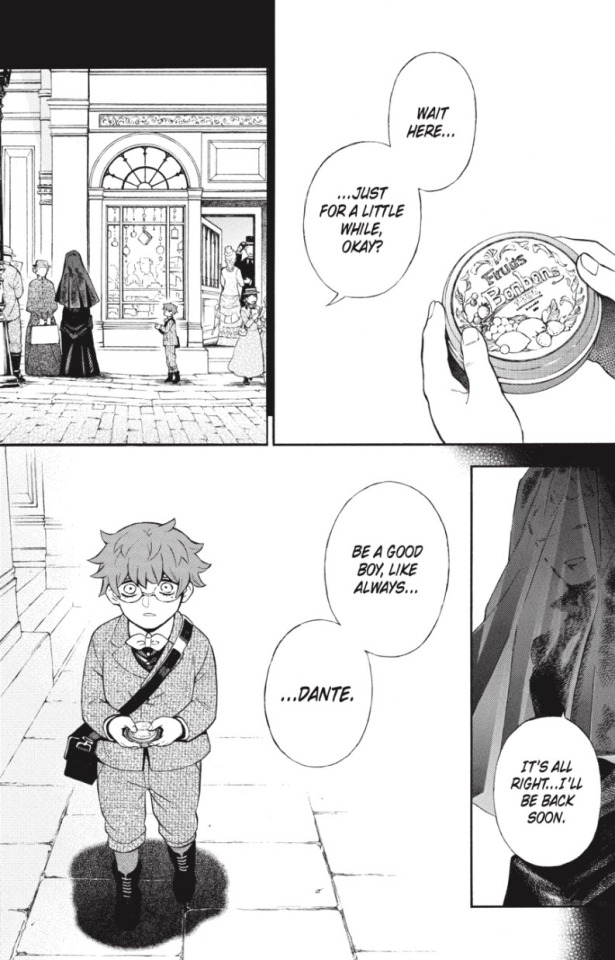
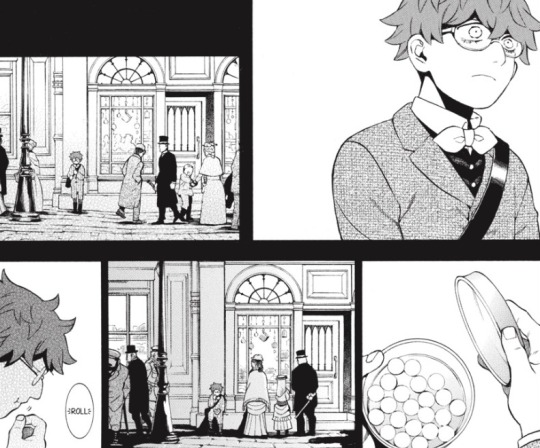

Dhampir kids eking out a living outside the cloak of Marquis Machina’s patronage by selling a drug named ‘miel’ that bears a striking resemblance to bonbons…
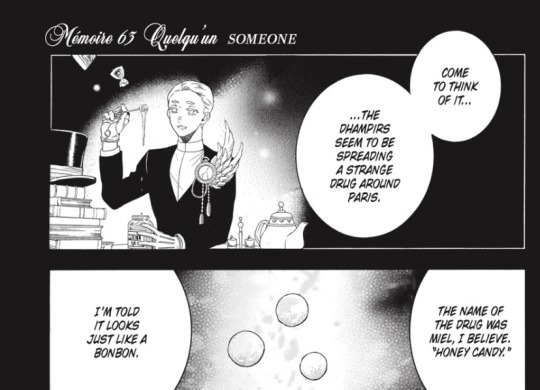

Mochijun’s too purposeful of a writer for that to be mere coincidence.
#vnc spoilers#vnc 63#vnc 61#vnc#vanitas no carte#the case study of vanitas#dante#johann#marquis machina#francis varney#lady archiviste#teacher#the shapeless one#comte de saint germain#gano
69 notes
·
View notes
Text
I’m a pretty tall cis woman with narrow hips, which means that now and again if my hair isn’t visible (eg under a hat) I get misgendered from behind. This doesn’t bother me but typically results in the other person looking mortified the instant I turn around.
Anyway yesterday was the first time in my life I turned around to someone looking deeply uncomfortable who then doubled down on calling me sir, and again I’m not precisely bothered by this but I am extremely curious about what was going on there.
#genuinely could not tell if they were trying to be polite or one of those unhinged transphobes trying to reinvent phrenology#granted i was in quite a shapeless winter coat but i also had my (very long) hair down and dangly earrings in#and i have fairly quote unquote feminine features or so i am told. so????? i’m so curious lol#gender stuff#my posts
30 notes
·
View notes
Text
Literally him
"The Shapeless One"
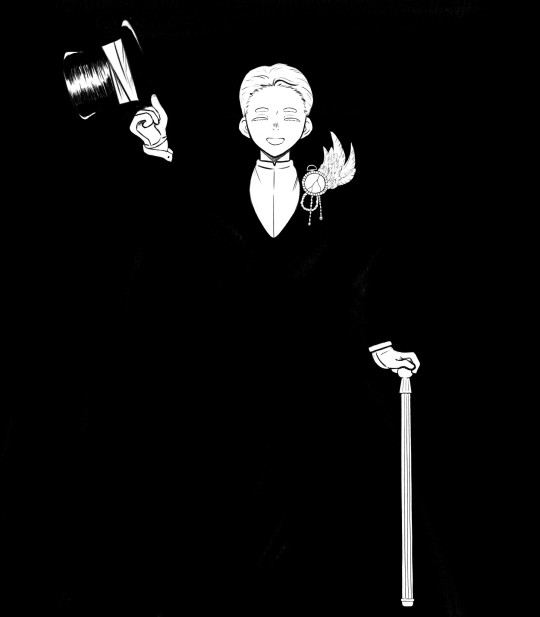

It's funny because I was trying to draw Dante when he was a kid but I ended up drawing the teacher.🤭
179 notes
·
View notes
Text
Vanitas no carte theory
It's probably been pointed out before, and I haven't read the manga yet but...


Is Noé's teacher his cat also?
I mean, think about it. Aside from the obvious similarities in their eyes, this guy has been referred to as the Shapeless one, it could mean that he can switch bodies, shapes, if you will.
#noé teacher#murr vnc#noé archiviste#noés cat#the shapeless one#the case study of vanitas#vanitas no carte#vnc noé#vnc vanitas#vnc#les memoires de vanitas#anime theory#im an idiot
33 notes
·
View notes
Text

Of course you have white hair and trauma
#I still say that calling the child you bought ‘my kitten’ is kinda weird#vanitas no carte#the case study of vanitas#vnc noé#noé archiviste#and finally#the shapeless one#sinister ass man#I am deeply suspicious of him#he will be evil I’m sure of it#morally corrupt at least
24 notes
·
View notes
Text

He’s the teacher bc he has phd in cuntology
197 notes
·
View notes
Text
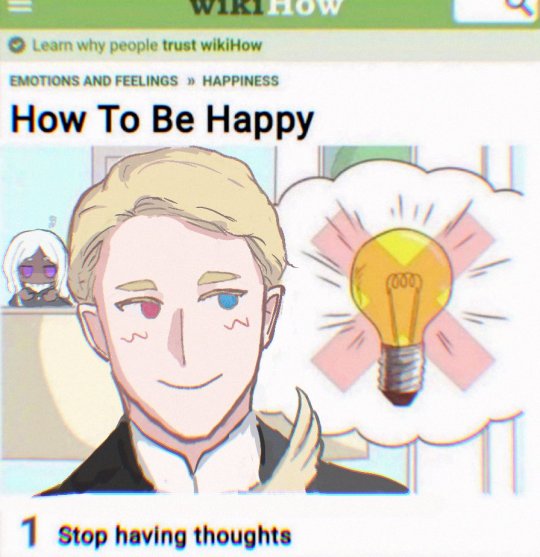
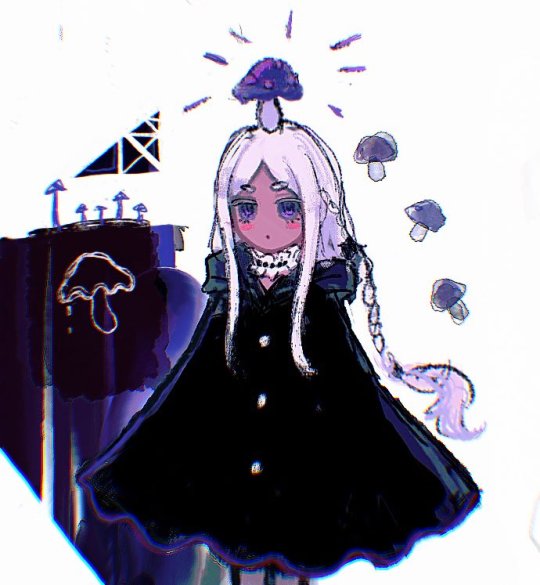
~
230 notes
·
View notes
Text
youtube
this one's a little less funny and a bit more sad. because i am always thinking about how doomed vanoé are.
#vanitas no carte#the case study of vanitas#vanitas no shuki#vnc vanitas#dominique de sade#noé archiviste#vanoe#vnc jeanne#jeanne the hellfire witch#louis de sade#veronica de sade#vnc dante#vnc johann#vnc olivier#vnc naenia#vnc faustina#vnc gano#vnc ogier#vnc misha#vnc mikhail#dr moreau#comte de saint germain#vnc sensei#the shapeless one#roland fortis#rolivier#vnc flute#jean-jacques chastel#astolfo granatum#august ruthven
19 notes
·
View notes
Text


So...
I'm re-reading Pandora Hearts, and this panel of Levi is another point toward the similarities between him and the Shapeless One.
Noé...I'm so worried for you...
#levi baskerville#the shapeless one#the teacher#comte de saint germain#vanitas no carte#vnc#the case study of vanitas#pandora hearts
28 notes
·
View notes
Note
I think Luna, Queen Faustina(naenia) and the shapeless one are wayyy too similar in the way they are drawn, the lines, the eyes. Shapeless one has one red eye and another blue eye, like naenia and the vampire of the blue moon..... am i missing smt or?
You're absolutely right! A lot of this actually gets pointed out by characters in the manga as well, so we know it's all intentional on Mochijun's part.
When Noé sees Luna in Misha's memories, he remarks in confusion that Luna looks extremely similar to Faustina:


Then, when Jeanne sees The Shapeless One for the first time in the amusement park, she observes that his left eye is the exact same color as Vanitas's eyes (and therefore the same color as Luna's eyes).

Teacher's right eye is violet, not crimson like Faustina's, so he's not a perfect combination of the other two, but there's definitely something going on here. Even without the visual link, we know they're connected, as Ruthven says Teacher was the first vampire to serve her (and the one to do so for the longest). He's extremely old, the oldest vampire we know of besides the queen, so he may even have some connection to Babel and Faustina's origins. (I'm personally a fan of the Teacher is Paracelsus theory, but that should really be a separate post).
As for your confusion, I honestly think you're right to be confused! We have all these extremely conspicuous connections and similarities, but no explanations yet. It's all just hints and gestures toward Big Reveals that are yet to come.
That said, I do have theories.
Luna and Faustina are similar-looking enough that I think they have to be related in some way. They could be normal relatives, one could have been artificially made in the image of the other, or it could be something even weirder that I haven't thought of yet, but there's no way their origins aren't connected somehow.
I know some people theorize they're twins, but that would require discounting all of the fairytale version of Luna's story, so I'm not ready to commit to that one quite yet. Faustina is supposed to be the first ever crimson vampire, created during or right after Babel, while Luna was supposedly born under a blue moon and born late enough that there were other vampires around to resent and reject them. Some of that mythos could be wrong! I'm absolutely not trusting that the fairy tale is telling the truth about Luna (or Faustina). But it's enough for now to make me suspect that their connection is something more complex than their simply being twins and/or both born from Babel.
Meanwhile, with Teacher, it seems like Mochijun is hinting to us that Teacher took Luna's left eye. Teacher has a left eye that we're specifically told is Blue Moon blue, and Luna's left eye is constantly hidden from our view under their hair. We also know from the above "most beautiful creature in the world" line, his involvement with both Misha and Noé/Vanitas, and his shapeshifting into them that Teacher seems to have some kind of fixation on Luna. If that fixation didn't drive him to take their actual left eye, then Mr. Shapeshifter may well be turning his own left eye blue on purpose in Luna's image.
I'm not discounting the possibility that the obvious explanation of "eye theft" could be a red herring, but Teacher's left eye's connection to Luna definitely strikes me as something affected rather than a sign of actual relation to the Blue Moon. After all, in that panel I included above, he discusses the beauty of "Blue" in a way that makes it sound like something external he's fascinated with, rather than something he possesses or is part of.
Overall, all three of these characters are obviously interconnected, and they all have equally mysterious origins, but with the information we have now, it's impossible to solve those mysteries. For now all we can do is theorize and wait to see what future chapters might clarify.
#thanks for the ask!#been a minute since I actually answered one. so this was nice to get back to#vnc#vanitas no carte#the case study of vanitas#luna#the vampire of the blue moon#naenia#faustina#teacher#comte de saint germain#the shapeless one#vnc spoilers#teacher my beloathed#luna my beloved#faustina my beloved#theory#ask#anon#ID in alt text
71 notes
·
View notes